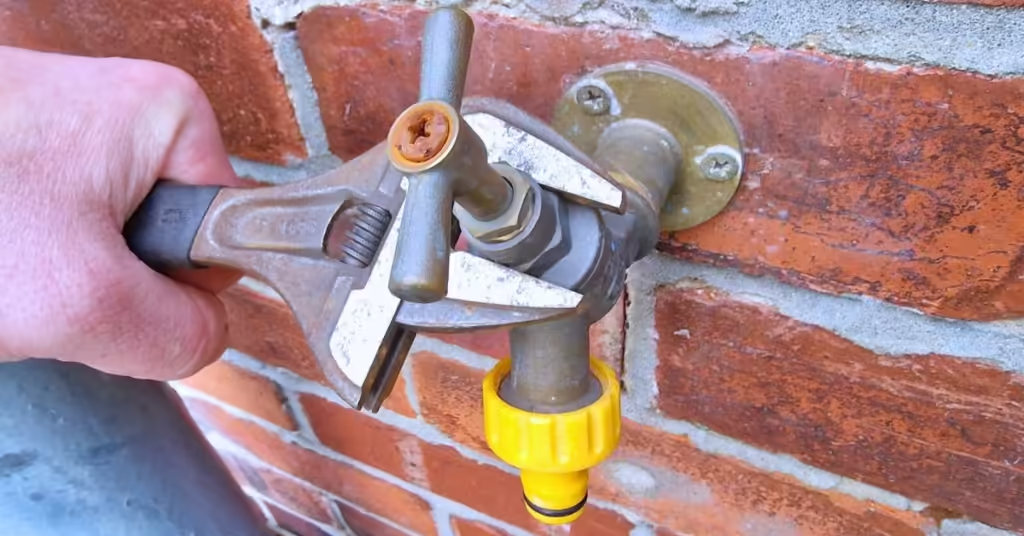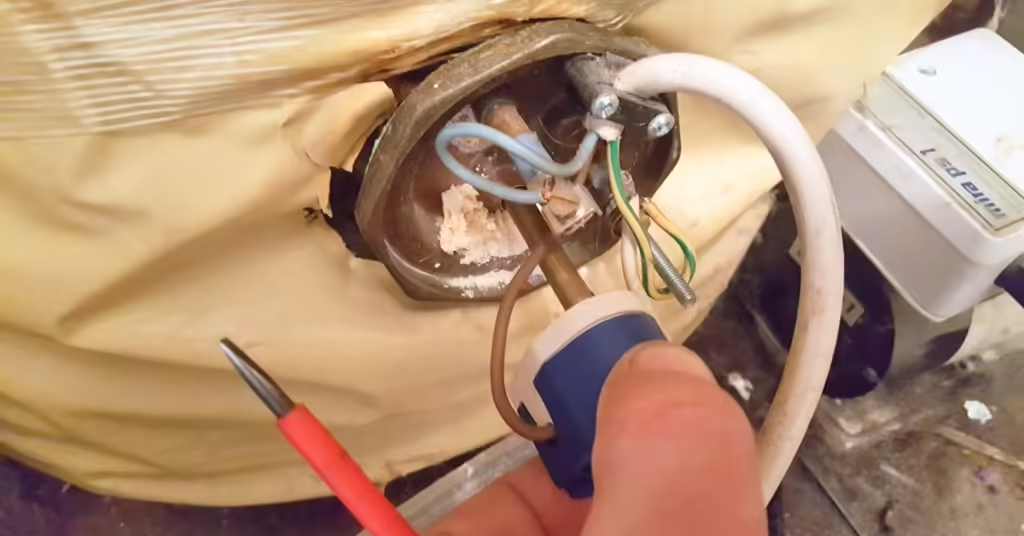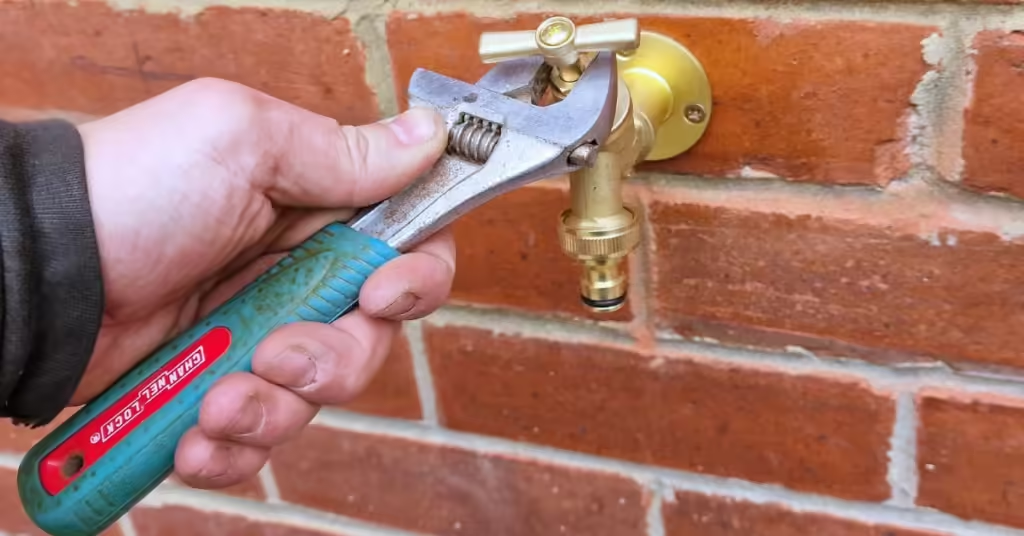Last updated on March 7th, 2025
Disconnecting a washing machine is simple most of the time but can be a bit of a headache. It is easier to “unplumb” than plumb in a washing machine but it’s not always plain sailing.
I have been a full-time plumber for over a decade and have fitted and disconnected many washing machines.
Steps to disconnect a washing machine
To uninstall a washing machine you have to turn off the water supply and disconnect three things:
- The electric supply cable
- The water supply pipe
- The drain hose

1. Unplug the power supply
Unplugging the electric supply cable to the washing machine is very simple. You should turn the switch off on the socket (if it has one) then pull the plug out of the socket to unplug the washing machine.
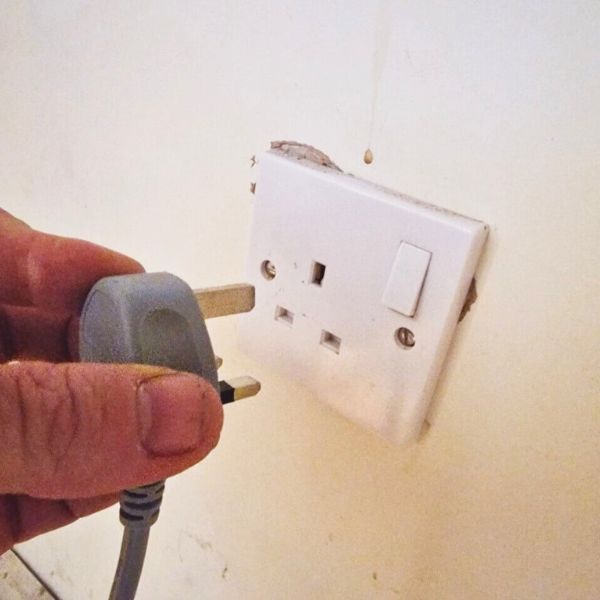
2. Disconnect the water supply
To disconnect a water inlet pipe, you must turn off the water at the washing machine water valve, or the property’s mains water stopcock.
Then, you should put a towel down (to catch any water in the pipe) and unscrew it from the washing machine valve, or the back of the washing machine, by turning it anti-clockwise.
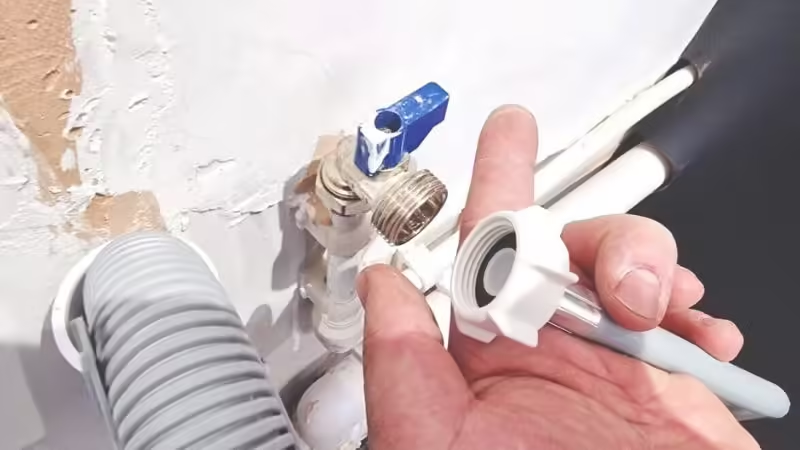
This pipe connection can sometimes be very stiff and you might need to use some water pump pliers to loosen it.
Most washing machines only have a cold water inlet supply pipe but you might have a hot water supply pipe also, both will need to be disconnected.
3. Disconnect the drain hose
The washing machine drain hose is used to get rid of the dirty waste water after washing laundry.

This hose is permanently connected to the washing machine, and the other end is either poked into a washing machine standpipe trap or connected to a waste pipe connector under the kitchen sink.
If the drain hose is in a standpipe, this is usually behind the washing machine and can be pulled out easily. If the drain hose is connected to a waste pipe connector under the sink, this is a little more tricky.

There might be a hose clip keeping the drain hose on (which will need to be removed first with a screwdriver), once this is removed the drain hose can be pulled off to disconnect it.
4. Blank off the water supply valve
If you are not connecting another water supply to the valve, then you should fit a blank nut so it doesn’t get accidentally knocked on in the future.

You can screw a 3/4″ blank nut on the washing machine valve and tighten it with an adjustable spanner before turning the water back on.
Washing machine water valve on or off?
A washing machine water valve that supplies the water to the washer is on when the handle is in line with the pipe or valve, and off when the handle is across the pipe or valve.
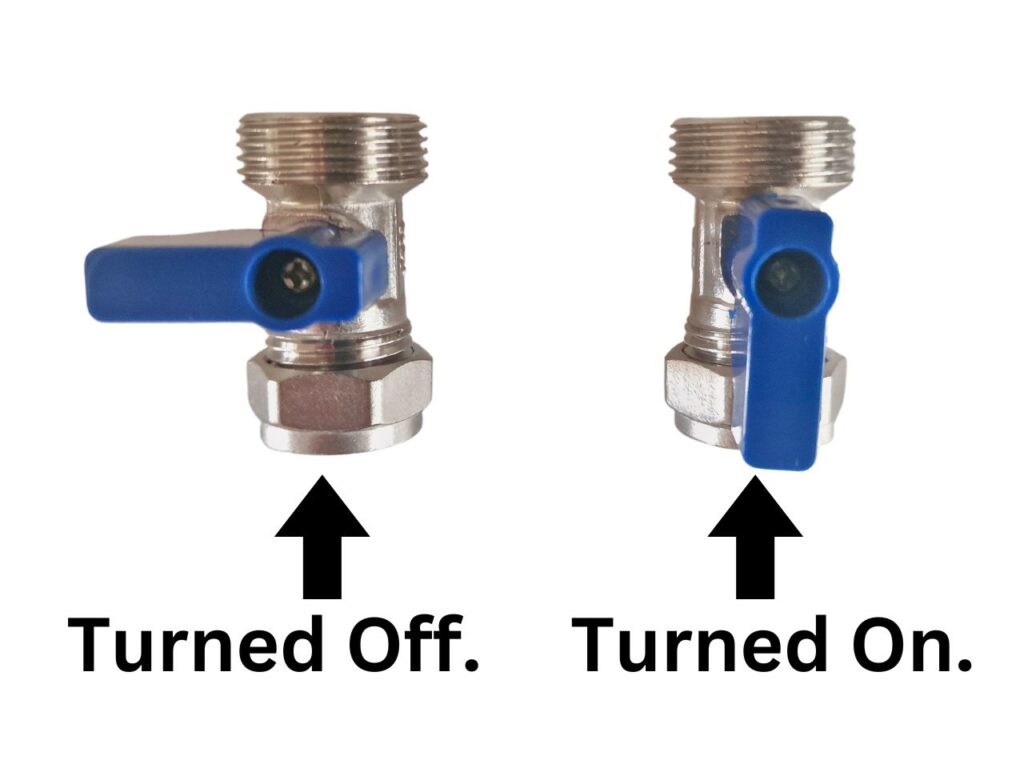
Summary
Disconnecting a washing machine is a lot easier than plumbing in a washing machine but it can still be tricky. Regular washing machine cleaning is highly recommended. You need to make sure the water supply is turned off and completely isolated then there’s not much that can go wrong.
You might struggle to disconnect the pipes but with a little bit of force and some decent water pump pliers, you'll get there.
If your washing is right next to the kitchen sink there is a good chance you can disconnect everything from under the sink. If it’s not, then you will have to pull the washing machine out to access the connections behind the washing machine.
Feel free to ask any questions in the comments below, and I’ll do my best to help. If you found this post helpful, please consider sharing it.
FAQs
Can you disconnect a washing machine yourself?
Yes, you can disconnect a washing machine yourself and you should as it is very simple most of the time. The most important thing is to isolate the water supply fully as once this is done there’s not much that can go wrong.
Do you need to turn off the water to move the washing machine?
Yes, you need to turn off the water to move the washing machine. If you are only moving it a little bit and the water supply pipe is long enough to stay connected then no you do not need to turn the water off to move it.
What do you need to remove from a washing machine before use?
The transport bolts need to be removed from a new washing machine before using it. The transport bolts keep the drum still while it’s being moved so it doesn’t become damaged.
You can use an adjustable spanner or socket set (better) to remove them and you should keep the bolts somewhere safe in case you need to move the washer again in the future.


